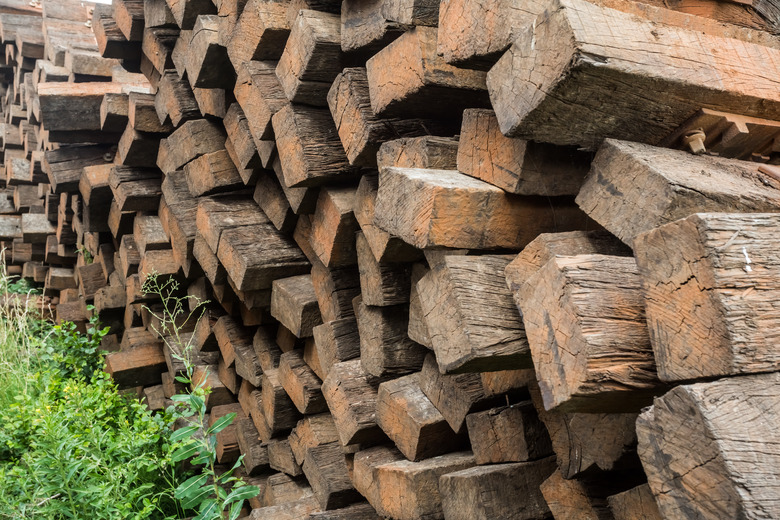Alternative To Railroad Ties
We may receive a commission on purchases made from links.
In the past, some people favored old recycled railway ties as a way of landscaping their garden. They're cost effective and were thought to be a positive environmental choice thanks to their reused nature. However, old railroad ties were treated with creosote to help preserve them during their long stints outside.
Today, creosote is not approved for residential use. Finding alternatives to railroad ties for use in your garden is key to safe and beautiful landscaping.
Dangers of Creosote
Dangers of Creosote
There are several different reasons using creosote-treated railroad ties in your landscape can be dangerous. Creosote can cause issues if it comes in contact with bare skin, including blistering and peeling. This makes the installation of railroad ties very dangerous and also causes issues for gardening with railroad ties.
Creosote poses problems for inhalation as well. This is particularly prevalent if you burn old railroad ties to dispose of them, but it can also be an issue with garden railroad ties in extremes of heat. Creosote releases polycyclic aromatic hydrocarbons, which are harmful to the lungs.
Railroad ties in the landscape can also cause issues with water contamination. If creosote leaks into the groundwater, it can create huge environmental problems. Using railroad ties to create beds to grow vegetables can also contaminate any items you grow. For these reasons, the U.S. Environmental Protection Agency does not approve railroad ties for domestic use.
Alternatives for Paving
Alternatives for Paving
Paving stones can be a better option than old railroad ties to create walkways in your garden. They can often be placed over turf or gravel, making them fairly easy to install. You can also create walkways using pebbles and adhesive.
If you enjoy the look of a walkway made with railroad tie steppers, the best alternative is another wooden material that's also treated to protect it from moisture and foot traffic. Pressure-treated lumber can be a good option for this, and although it's more expensive than railroad ties, the fact that it's safe for use in walkways should make it worth the money.
Alternatives for Landscaping
Alternatives for Landscaping
Pressure-treated lumber is the closest alternative to railroad ties for landscaping your garden and creating planters. The problem is that this lumber is also not recommended for use in creating planters, particularly for growing vegetables or any other edible items. Although free of creosote, it's treated with other chemicals that can contaminate your food and cause health problems. You'll also need to ensure your pressure-treated lumber is rated for ground contact before using it.
You can also use plastic landscape lumber/timbers, made from recycled materials. This material resists rot, insects, and fungal problems and can be used in ground-contact applications, including retaining walls, edging, raised beds, planters, and compost bins.
For safer planter retaining walls, pavers and rocks tend to be a good choice. Natural options rather than man-made blocks of cement can be both stronger and safer in terms of contamination.
You can also find safe wooden options to create planters, but different types of wood come with different issues. Most wood isn't very durable, especially in the wet, weather-beaten environment of a garden, so it may need to be replaced fairly regularly. There are longer-lasting wood options, but the cost of these can add up very quickly. Redwood and cedar are naturally protected against rotting but won't last as long as treated lumber options. Nonetheless, if you do want to use wood to create vegetable gardens, they are by far the safest way to go.
